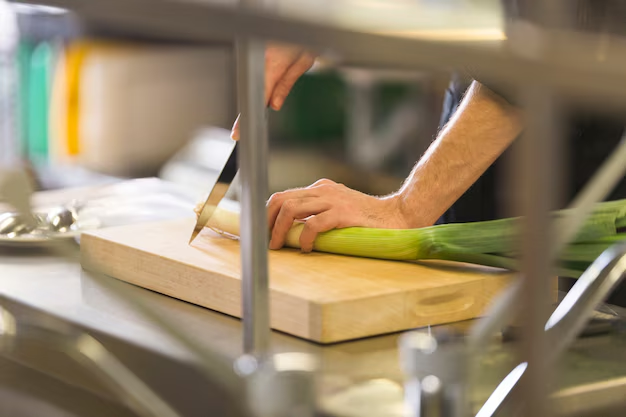Master the Art of Storing Your Refrigerator for Optimal Longevity and Performance
When it comes to efficient food storage, the refrigerator is an unsung hero in many households. Whether you're moving, renovating, or just need to temporarily store your refrigerator, doing it properly can significantly extend its lifespan and maintain its efficiency. Here, we’ll guide you through all the necessary steps and considerations for properly storing a refrigerator, along with useful tips and best practices.
📦 Preparing Your Refrigerator for Storage
Clean and Empty the Fridge
Before storing your refrigerator, it’s crucial to empty it completely. Remove all food, beverages, and detachable components like racks and drawers. These items can be cleaned separately.
- Defrost the freezer if the unit is not frost-free. Doing so prevents water damage or mold growth while in storage.
- Use a gentle cleanser or a solution of baking soda and water to wipe down every surface inside the fridge. This not only cleans but also helps eliminate any lingering odors.
Disconnect and Dry
Once your refrigerator is empty and clean, it’s time to disconnect it from power.
- Unplug the refrigerator and allow it to dry thoroughly. Leaving the doors open helps with air circulation and drying.
- Remove all water from the defrost drain and truncate the water supply if your fridge has an ice maker.
Secure Loose Parts
To avoid any damage during transportation or storage:
- Use tape or plastic wrap to secure loose shelves and drawers.
- Tie down the power cord.
🌡️ Choosing the Right Storage Environment
Location Matters
Choosing the right environment for storing your refrigerator is crucial. Consider these factors:
- Climate: A cool, dry place is ideal. Avoid storing in extreme temperatures.
- Protection: If storing outdoors, consider using a protective cover but ensure it’s ventilated to prevent moisture build-up.
Positioning
The position of the fridge during storage can influence its integrity:
- Upright is Best: Keep your refrigerator upright to prevent oil from the compressor from leaking into the cooling lines.
- Slight Tilt: If you must tilt, don’t exceed a 45-degree angle. Ensure it remains upright for several hours before plugging it back in.
🛠️ Maintenance During Storage
Regular Checks
Even when not in use, it's beneficial to check on your stored refrigerator:
- Inspect for moisture: Mold and mildew can develop if the fridge was not completely dry before storage.
- Check structural integrity: Ensure all moving parts are secure and no mold has developed on the surfaces.
Moving the Fridge Back into Use
When you're ready to reinstate your fridge:
- Inspect and Clean: Double-check for mold or damage and wipe down surfaces.
- Stabilize: Allow the fridge to stand upright for several hours before plugging it in, ensuring oil in the compressor settles.
🗒️ Summary of Key Tips for Storing a Refrigerator
Here's a handy checklist to ensure your fridge is stored correctly and remains in good shape:
🔹 Clean Thoroughly: Remove all contents and clean with a baking-soda-and-water solution.
🔹 Defrost: Make sure the freezer is defrosted and all water is removed.
🔹 Unplug and Drain: Disconnect power and any water connections, allowing everything to dry.
🔹 Secure Parts: Tape down any detachable parts to prevent movement.
🔹 Choose the Right Spot: Store in a climate-controlled environment if possible.
🔹 Keep Upright: This maintains the compressor and cooling line integrity.
🔹 Check Regularly: Look for moisture or mold to handle it promptly.
🔹 Allow Rest Before Use: Let it stand upright for several hours before plugging back in.
⚠️ Common Mistakes to Avoid
Keep these errors in mind to protect your appliance:
- Forgetting to clean: Leftover food particles can lead to unpleasant odors and mold.
- Storing in damp environments: Moisture can lead to rust and damage over time.
- Ignoring Position: Storing on its side can damage internal components.
🛒 Related Tips for Food Storage and Shelf Life
Transitioning smoothly into related topics, effective food storage doesn’t only depend on the refrigerator itself. Here are some general food storage practices:
👉 Optimize for Freshness
- Organize Your Fridge: Proper organization helps air circulate and keeps food fresh longer.
- Temperature is Key: Keep your fridge at around 37°F (3°C) and freezer at 0°F (-18°C) for optimal performance.
- Use Airtight Containers: Prevent cross-contamination and keep your fridge tidy.
💡 Extend Shelf Life
- Know Shelf Lives: Familiarize yourself with the average shelf life of perishables.
- Regular Cleaning: Routine cleaning prevents mold growth and ensures efficient operation.
Storing your refrigerator correctly not only prolongs its life but also ensures a smooth transition when you need it back in service. By following these steps and maintaining good food storage habits, you can enhance both the durability of your appliance and the freshness of your food!
